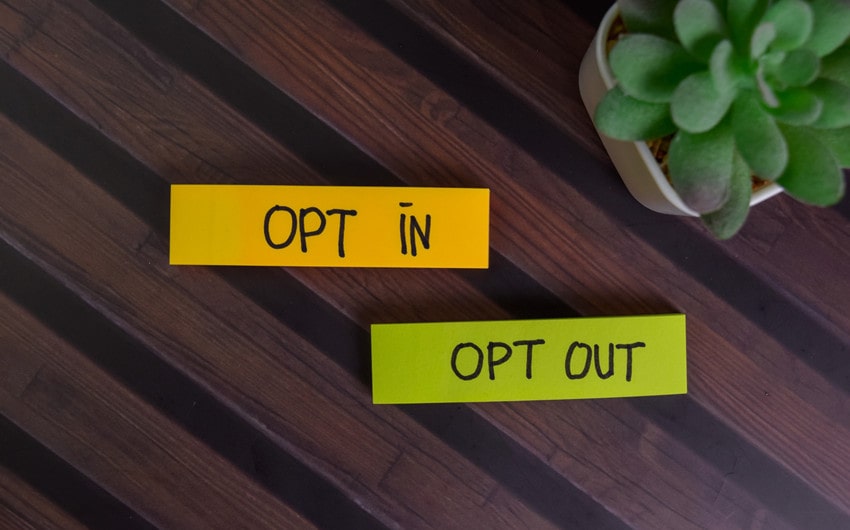What Does OPT Mean in Text? Understanding Its Uses in Chat
In texting, “opt” is a quick way to say you’re choosing or deciding on something. Ever seen “opt in” or “opt out” pop up? These phrases let people join in or step away, making it easy to confirm or decline invitations or subscriptions. But what does “opt” mean in text exactly? It’s all about making a choice—whether that’s joining a group chat, receiving updates, or staying out of something. With more of these quick shortcuts, knowing what they mean can keep conversations simple and clear.
What Does OPT Mean in Text?

In texting, the abbreviation “OPT” stands for “option” or “to choose.” When someone says “opt,” they’re referring to making a decision, usually between two or more choices. It’s a handy way to convey actions like joining, accepting, or declining. “OPT” keeps things short and clear, making it ideal for quick digital conversations.
For example, in a group chat, you might see, “Do you want to opt for pizza or burgers tonight?” or “You can opt to get these notifications.” Each use of “OPT” centers around a personal choice—whether it’s joining in on an activity, participating in a service, or passing up an offer. The simplicity and flexibility of “OPT” have made it popular in messages, emails, and notifications.
What Does “Opt In” Mean?
“Opt in” refers to the act of actively choosing to participate, join, or receive something. It’s often used when signing up for emails, joining a group, or agreeing to receive certain updates. When you “opt in,” you are giving consent or confirming interest.
In everyday texts, you might see examples like, “Are you opting in for the game night?” or “I opted in to get updates about the new product release.” In digital communication, “opt in” is popular for confirming that someone wants to be included, whether in messages, subscriptions, or notifications. The idea is to ensure that participation is voluntary and that users make a clear choice to be part of something.
What Does “Opt Out” Mean?
“Opt out” means to choose not to participate or to remove yourself from something you were previously part of. It’s commonly seen in scenarios where people wish to unsubscribe from services, notifications, or mailing lists. When you “opt out,” you’re declining or stepping back.
In text, you might encounter phrases like, “You can opt out of alerts anytime,” or “I opted out of the event updates.” Many platforms and services offer “opt out” options to let users have control over what information they receive, providing a quick way to manage communication preferences and avoid unwanted updates.
How to Use “OPT,” “Opt In,” and “Opt Out” in Text Messages

Using “OPT,” “opt in,” and “opt out” in text messages is simple and can make conversations clear and straightforward, especially when discussing choices, participation, or preferences. Here are a few tips on how to use each term effectively:
How to Use “OPT”
1. Expressing Choices
“OPT” is a straightforward way to convey decisions between options without needing to write lengthy explanations. When you use “opt,” you’re letting others know you’ve made a choice or are leaning toward a specific option. This term can help keep conversations quick and to the point, especially in group chats or when deciding between multiple plans.
2. Giving Options
You can also use “opt” to offer others a set of choices or suggestions. This is particularly useful in messaging because it makes it clear that a decision needs to be made, but each person has flexibility in choosing their preference. Using “opt” in this way helps set expectations while respecting each person’s freedom to make a selection.
How to Use “Opt In”
1. Inviting Participation
“Opt in” is a friendly and inclusive way to ask if someone wants to participate, receive updates, or join a specific activity. By using “opt in,” you signal that participation is voluntary, and no one is obligated to join unless they confirm their interest. This makes it clear that involvement is by choice, which can help avoid any pressure or assumption of attendance.
2. Requesting Confirmation
When you need confirmation for events, updates, or group activities, “opt in” can communicate this request politely. It works well in group chats or event planning, where you want to ensure everyone is truly interested before proceeding. Using “opt in” in this way encourages people to confirm only if they’re fully on board, making organization and planning smoother.
How to Use “Opt Out”
1. Offering an Exit Option
“Opt out” provides a courteous way for others to step away from conversations, updates, or activities without judgment. This is especially useful in group chats or situations where some people may not be interested in every message or event. By using “opt out,” you make it clear that there’s no pressure to stay involved, and each person’s preference is respected, which is helpful in both personal and professional conversations.
2. Unsubscribing from Notifications
Common in marketing texts, “opt out” is often used to help people stop receiving notifications or promotional messages. It’s a polite and professional way to give recipients control over their messaging preferences, allowing them to choose whether they want to continue receiving information or not. Providing an “opt out” option shows consideration for the other person’s preferences, enhancing communication by making it easy to manage notifications.
Examples of OPT, Opt In, and Opt Out in Text Messages
Seeing “OPT,” “opt in,” or “opt out” in text messages is common when people are discussing choices or personal preferences. Here are some examples of each to help illustrate how they work in digital conversations:
Examples of “OPT” in Text Messages
- “I’m trying to decide what to wear to the party. I think I’ll opt for the blue dress.”
- “You can opt to receive updates about our latest products by replying YES.”
- “I might opt for the early flight instead of the later one.”
Examples of “Opt In” in Text Messages
- “Are you going to opt in for the team dinner tomorrow night?”
- “I opted in to get notifications about the local sports games!”
- “To receive special offers and updates, simply reply ‘opt in.’”
Examples of “Opt Out” in Text Messages
- “You can opt out of these texts anytime by replying STOP.”
- “I opted out of the group chat since I couldn’t keep up with the messages.”
- “Do you want to opt out of the notifications for this event?”







